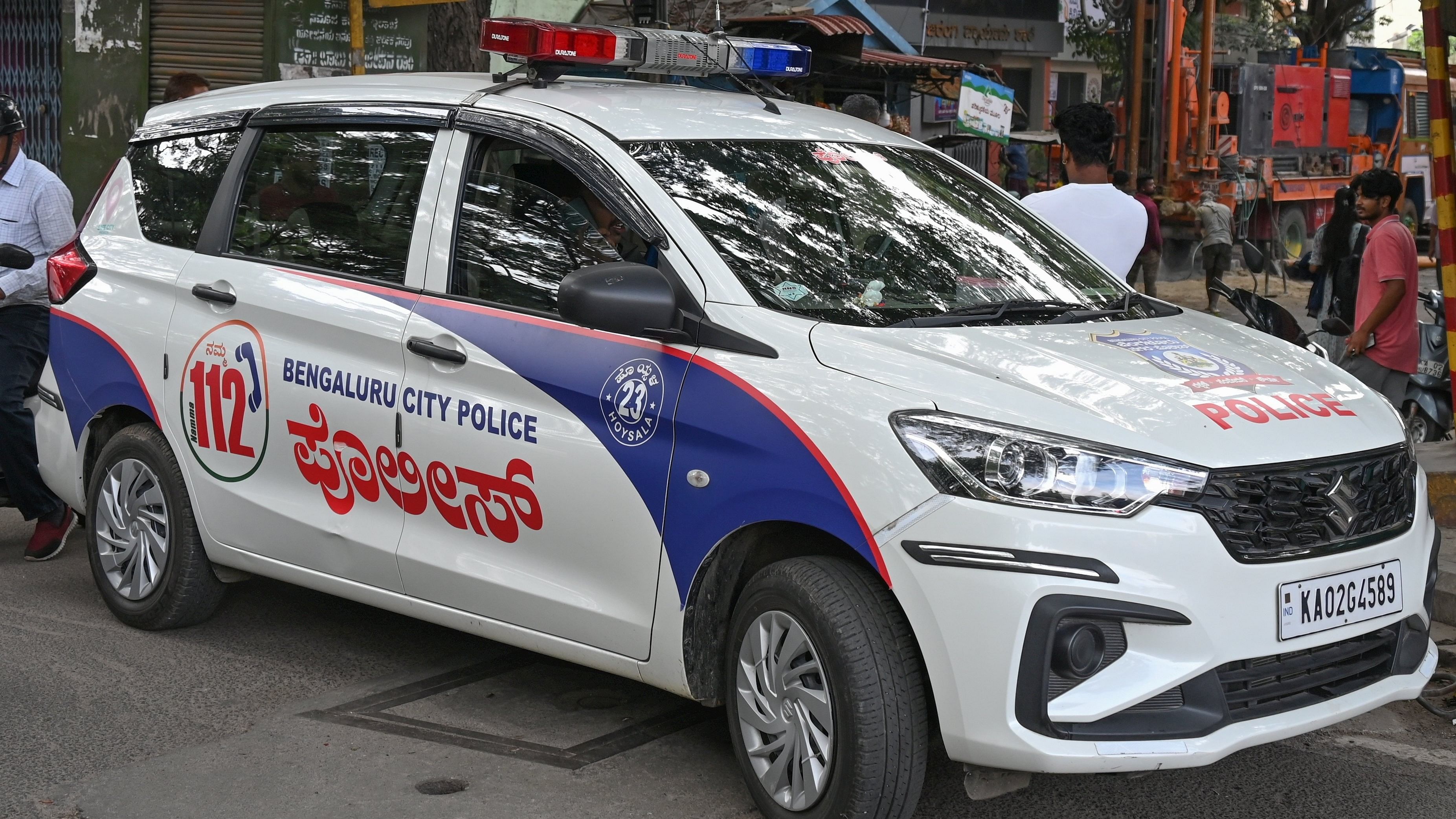
Credit: DH Photo
Bengaluru: Hoysala police personnel patrolling the nooks and crannies of Bengaluru have transformed into a much more competent force through tech and firepower.
They now carry government-issued small arms (pistols), are held accountable through geofencing besides being first responders at crime scenes. They secure the crime scene, assist the victims and, if the opportunity warrants it, nab the culprits.
A Hoysala team is now mandatorily led by an assistant sub-inspector (ASI), who is the patrolling officer. If an ASI is unavailable, the team is headed by a sub-inspector, a higher-ranked officer. Head constables can no longer lead the team.
All the ASIs have been adequately trained before being issued weapons. All members of the Hoysala patrol team must use body-worn cameras. At night, they must also wear reflective jackets.
The night-beat staff in the station must now carry the lighter 12-bore pump action guns. The sweeping changes are a far cry from Hoysala personnel’s previous role largely limited to spot visits and patrolling.
Bengaluru police commissioner B Dayananda stressed the need to equip Hoysala personnel so they handle criminals, especially at night. “In a way, it empowers and gives them the confidence to handle a situation, any situation,” Dayananda told DH.
He added: “Whenever night-beat personnel leave for duty, they have to collect the weapon, deposit it at the police station and give a debriefing. This ensures accountability.”
Movements geofenced
The existing Hoysala fleet has 241 vehicles. On average, two to three vehicles are deputed for a particular station based on its jurisdictional spread.
For effective patrolling, a new ‘halting-point’ concept has been introduced. Hoysala patrolmen change their location every 30 minutes. The ‘halting points’ are strategically marked to cover the entire area. Due to this, the response time also came down to an average of 7-7.30 minutes.
The movement of the Hoysalas has been geofenced at the Command Centre. When they move out of their designated area, an alert is sent immediately.
A second alert is sent when the patrolmen don’t move after the 30-minute window, which is forwarded to the respective in-charge officers. If there is a need to move, the patrolmen must inform the Hoysala control room of the purpose.
“Whenever the patrolmen go to the spot, they have to inform the Hoysala control room through their wireless device,” the commissioner said. “The control room will then flash the crime information shared by the patrolmen. This alerts the other patrolmen, which will help catch the culprits.”
What led to the changes?
Around three months ago, police staged a ‘dacoity’ to gauge the response of Hoysalas. Police officers in plainclothes watched them.
It was found that the patrolmen reached the spot, called the local police and waited for them instead of taking control. They also did not attend to the victims.
The commissioner then ordered a revamp of the Hoysala’s functioning.
The new standard operating procedure (SOP) specifies their responsibilities, when they should contact the local police and why. Hoysala officials have also been given a rundown of how to secure the crime scene, aid forensic analysts, assist the victims, talk to them, gather details and defuse a situation.
“The patrolmen have been receiving training for the same at the Command Centre,” commissioner Dayananda said. “Every month, the assistant commissioners of police (ACP), who are in charge, will inspect Hoysala vehicles and every week they will brief the patrol officers and staff.”
According to the top cop, the new changes have begun showing results and helping fill the gaps in the patrolling system. “Every week or every 15 days now, we see criminals being caught red-handed,” he said.
Highlights - Fully equipped * Service pistols* Wireless devices* Body-worn cameras* Single-digit fingerprint scanners* Tubular cones* First-aid kits* Reflective jackets